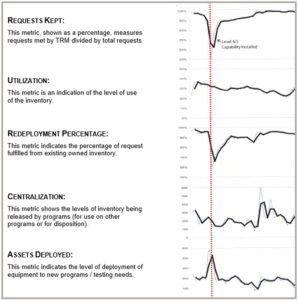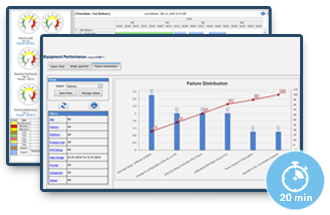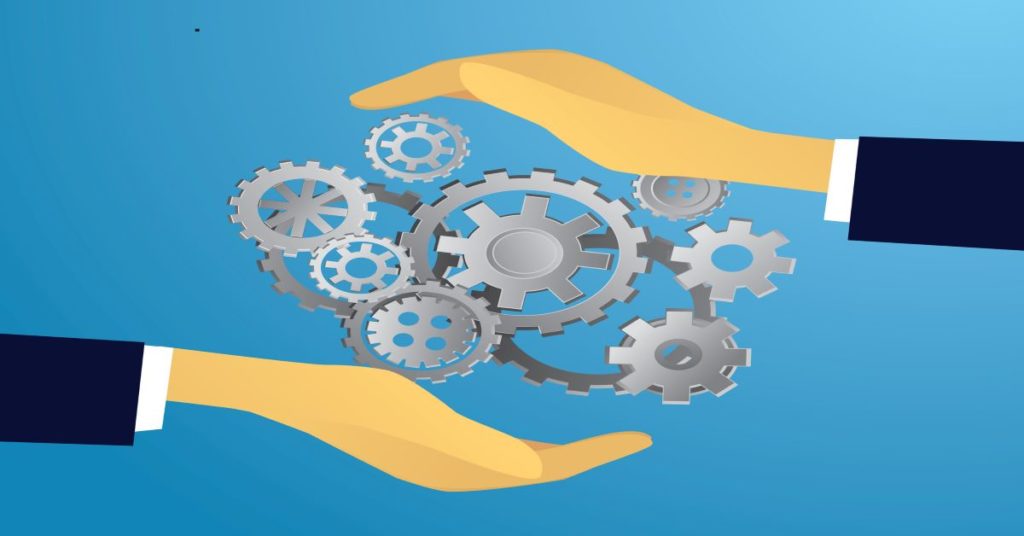

The Good Intentions Trap is Costly
If achieving a big result looks too easy, it probably is and will probably be a costly venture. It is a trap we are all vulnerable to when we don’t understand all of the underlying mechanics required to produce an outcome in a given set of circumstances. We are blind to the risks and because we are blind we won’t understand the obligations required to manage risks. Below I share a real-life example that happened to Sente almost 20 years ago. It has forever reinforced to me the notion that all significant costs, asset management or otherwise, are the result of human mechanisms, often ineffective human behavior as written about in, “Asset Management Success Factors: It’s the Human’s Stupid”.
Good Intentions Trap: A Real-Life Example
We had been working with this customer for almost three years and together we had produced some amazing cost savings and productivity results. We had driven utilization from low teens in their labs to roughly 30%. During one of our governance meetings, executives asked me what I thought the utilization limit was for their labs. I told them I wasn’t sure, but with some additional practices, I could see producing over 50% utilization. Given what I was observing in our operations I thought we were at about the process limit at 30% utilization with our current set of capabilities.
My concern was that at the speed of new demand for equipment coming into our operation we’d miss something either because we weren’t told about it, we — our customers and us — were making assumptions about our capacity that wouldn’t be true, or some other reason. Everyone was too used to Sente always delivering. I felt our demand planning capacity needed to become more capable of anticipating constraints that were related in complex ways and constantly changing as schedules changed. With more programs coming faster, and schedules changing, I didn’t think it was humanly possible for us to keep up. I was concerned we wouldn’t be trustworthy at our current capability and capacity.
The customer pushed hard that we should drive for 60% utilization and “keep our costs low” by doing it with the team and capabilities we had. The customer didn’t want to take on additional costs. If there were any issues we’d fix them along the way. I felt uneasy but thought their suggestion to “fix issues along the way” seemed reasonable.
The Distrust Contagion
You probably guessed it. With business ramping up we missed a commitment. We were supposed to have 20 pieces of equipment to start a test program by a certain date and we only had 19 of them. Unfortunately, the one that was missing would delay the start of the test. There had not been a delay since Sente had come on board, in fact, Sente had solved all of the problems they had before and no only had there been no delays but engineering managers had reported an increase to speed by commenting “we took six weeks off a six-month project.” It didn’t matter. Rumor had it, “Sente had lost the secret recipe.” The rumor spread like wildfire. If Sente was no longer trustworthy people began locking down their equipment and refused to share it because now they had to “take care of themselves”. The more they hoarded, the more other commitments were broken causing more and other people to hoard. They were reverting to old behaviors. It was a vicious cycle producing distrust that we were blind to so we didn’t find out about it right away.
No one told us they were going to start hoarding, they just did.
They gave us excuses that we believed because up to that point we were trusted so they always told us the truth which we used to produce continual improvements. This all changed and they began telling us whatever story we needed to hear so they could keep their equipment. After a few months, it was clear something had happened. We could see it in the metrics and now had a better understanding of what distrust meant, where it showed up first, what was required to fix it, and how long it took to recover. Below is data extracted from a very old report using some of the important metrics we write about in, “Are Your Metrics Complete? Do They Trigger Effective Behaviors and Results?”

Both Sente and our customer took ownership of the situation, installed our new planning capabilities, and eventually hit utilization levels above 65%. It took a good year to completely recover trust even after the almost three years of near-perfect performance that preceded the big miss.
The Cost of Distrust: Over $1 million
Fortunately, we had our processes well-instrumented so once we realized what was going on we could see it’s effects on multiple metrics and determine costs.
- Assets shared decreased from a peak of close to 400 per month to just above 100
- Requests kept, which had been running 98% plus, plummeted to 49%
- Utilization had peaked at around 40% and would eventually drop to 20%
- A conservative estimate of the financial cost of this mistake was $1 million. Fortunately, because of our performance earlier in the year we were still on track to meet our annual commitments, but the customer wasn’t happy. They could have saved and reinvested more money without the breakdown.
Lessons Learned About Building Trust
Lesson number one is to catch the breach in trust early, anticipate the consequences and quickly intervene with apologies, explanations, and plans that can be trusted so hoarding can be halted. We didn’t make any real intervention for a couple of months because we didn’t know there was a major issue. The delay in seeing the breakdown was costly. We now know what to look for.
I’ve also learned to trust my knowledge where I have it and know where I don’t have it. Unlike many asset management solutions, we’ve always understood that there were consequences to asset costs resulting from human behavior and that trust was critical to keeping costs low. We learned quite a bit from this experience. We learned that trust wasn’t a “1” or “0”, “on” or “off”, “had it” or “didn’t have it”. There were standards. Production of trust was situational. Without the new capabilities, we weren’t trustworthy to drive utilization above 30% in the circumstances we found ourselves in no matter how good our intentions.
Finally, the truth always shows up in actions and not always in words. While no one was telling us they were going to hoard, after the fact we could see their behaviors in measurable ways through our metrics. To build trust make judgments based on facts, which means you must accumulation the right data and facts to make those judgments.
One of my favorite quotes about trust comes from, Thomas Watson, past CEO of IBM, “The toughest thing about the power of trust is that it’s very difficult to build and very easy to destroy.” How true.
If Your Support Groups Run Like the DMV, You Are Paying a Big Hidden Cost
I wrote about this in our blog post, “Are Your Support Organizations Operating With a DMV Mindset“.
This mindset comes from management methods and habits developed in the last industrial revolution which were internally focused, driven by people in silos getting their tasks done with standard operating procedures designed by someone else. In a world that changed much more slowly than today’s world this worked. It produced efficiency at scale. Today it is a competitive disadvantage. It is too slow in a world that needs speed.
Customers of these organizations probably know they aren’t producing at a high enough level but don’t know what is possible and it’s not their job to figure it out. You can be sure the distrust in the system is driving costs that are hidden but that show up on the bottom line. They are part of the cost of running a business. They don’t have to be.
Request a Demo

See how Scireo aEAM Software drops asset and support costs by 50% while accelerating time-to-market 2X.
Relevant Content
Active Asset Management: Transforming for the 4th Industrial Revolution
What is Active Asset Management? It is an approach that actively analyzes, targets, and makes improvements to the speed and competitiveness of asset-intensive enterprise processes in engineering and manufacturing. It is an approach that aligns the action and urgency of every team member with the ultimate objective of their customer: to win the race! The…
Are Your Metrics Complete? Do They Trigger Effective Behaviors and Results?
Asset Management Metrics are very important to success. I won’t say the most important though, because a number without a narrative that gives it meaning, relevance, and value might as well not exist. It won’t produce any change in direction or focus. If you don’t have a purpose, by definition they aren’t complete They are…
Asset Management Success Factors: It’s the Humans, Stupid!
We don’t organize merely around managing assets. Assets are easy to manage. They never have a bad day. They are never dissatisfied with their work, ask for more money, have hidden agendas or storm out of the room — although over the years we have heard quite a bit about how assets “walked”. Assets can’t…
Connects Cross Functional Teams Using a “Whole System” Approach
Our Whole System Approach to managing performance in mission-critical, asset-intensive enterprise processes, e.g. test, is why we’ve been able to help our customers drive award-winning results, helping them win enterprise best practice awards. Our results have been uncommon and superior: 25% to 85% increases to speed and responsiveness 40% to 75% reduction in equipment costs…
Notable Quotes
“The hoarding mentality is being replaced by ‘Use TRM’. Especially since now it only takes about 15 minutes to make an equipment request, compared to several hours or more looking for something yourself under the old system.”
Lead Technician









